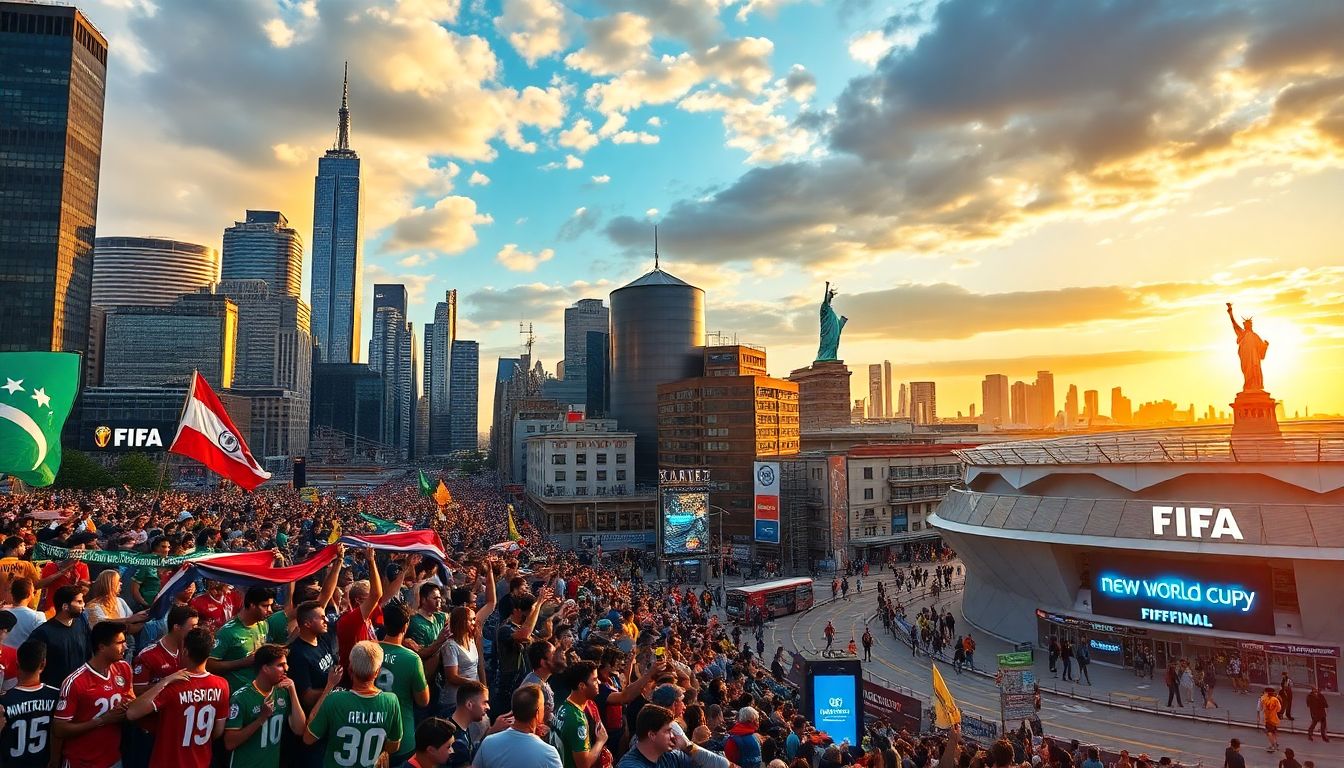
Introduction
The 2026 FIFA World Cup is shaping up to be one of the biggest sports events in history. Co-hosted by the United States, Canada, and Mexico, this tournament marks a historic milestone. With New York and New Jersey both playing important roles, the final game could be held in one of their stadiums. Their close proximity and strong infrastructure make them prime candidates. Preparing for such a colossal event involves improving transportation, security, venues, and engaging local communities. Let’s explore how these two states are getting ready for this global celebration of soccer.
Major Venues and Infrastructure Developments
Renovations and Upgrades at Key Stadiums
One of the main stadiums considered for the final is MetLife Stadium in East Rutherford, New Jersey. It already hosts big events like the Super Bowl and the College Football Playoff, so it’s well-prepared. Plans include expanding seating capacity and modernizing facilities. This ensures fans will have a comfortable experience. The stadium’s past success in holding large crowds proves it’s ready for the demands of the World Cup final.
Transportation Infrastructure Improvements
Transportation upgrades are critical. Airports like JFK, Newark Liberty, and LaGuardia are upgrading to handle international visitors smoothly. Long lines and delays need to be avoided. Public transit is also seeing improvements. NYC’s subway system and New Jersey Transit are expanding services and adding new routes. Traffic management plans now include dedicated lanes and crowd control checkpoints. These measures will make sure fans and teams get to and from venues quickly.
Accommodation and Hospitality Expansion
Hotels are adding new rooms and renovating to meet increased demand. Luxury hotels are upgrading while affordable options are also expanding. Promoting special packages with local tourism boards helps fans save money and enjoy the city. Officials say this creates a win-win—more visitors, more spending, and a boost for local businesses.
Security and Safety Measures
Advanced Security Protocols
Security is a top priority. Federal, state, and local agencies are working together to deploy more personnel, surveillance cameras, and biometric scanning at venues and transportation hubs. These measures increase safety for everyone. Cybersecurity is also being strengthened to protect ticket sales and communication systems from cyberattacks.
Crowd Management and Emergency Preparedness
Staff and volunteers are undergoing training to handle large crowds. Emergency teams are on standby, ready to respond to any situation. Large-scale simulations help prepare for emergencies like medical issues or weather disruptions. The goal is to keep everyone safe without disrupting the experience.
International and Diplomatic Coordination
FIFA and international agencies are setting strict security standards. Protocols for handling tourists and potential threats are in place. When the weather turns bad or other issues occur, contingency plans will kick in. This foresight keeps the event running smoothly despite unforeseen challenges.
Community Engagement and Local Economic Impact
Public Awareness Campaigns
Local governments are running campaigns to inform residents about the World Cup. These include safety tips, event schedules, and how to get involved. This helps build excitement and ensures everyone feels part of the celebration. Promoting local businesses and cultural events creates a festive atmosphere.
Benefits for Local Economies
The tournament will bring a big boost to the local economy. Hotels, restaurants, and shops expect higher sales. Jobs—temporary and permanent—will be created as preparations spawn new opportunities. This economic growth can last long after the final whistle blows.
Social and Cultural Initiatives
Community programs are promoting diversity and inclusivity. Festivals, murals, and public events highlight local culture. This adds a special touch to the tournament, making it not just about soccer but about celebrating the area’s unique identity.
Environmental Sustainability Strategies
Green Infrastructure and Practices
Sustainability is key. Cities are encouraging fans to use public transit instead of cars. Recycling stations and waste reduction efforts are visible at venues. These steps help lower the event’s overall carbon footprint.
Renewable Energy and Resource Conservation
Construction projects are using renewable energy sources where possible. Water-saving measures are in place, and eco-friendly building materials are common. This shows a genuine commitment to protecting the environment during this major event.
Education and Outreach
Visitors and residents are learning about sustainability efforts. Informative signs and campaigns encourage eco-friendly choices. Everyone is encouraged to be responsible, helping make the World Cup a model for future large events.
Future Outlook and Long-Term Legacy
Legacy Projects and Urban Development
After the tournament, stadiums and infrastructure will serve the community. Urban revitalization projects will improve neighborhoods and transportation options. These developments help ensure the benefits continue well beyond the final game.
Lessons Learned and Best Practices
Looking at past tournaments gives useful insights. Lessons learned, such as crowd control and security enhancements, are being applied now. This makes each event safer and more enjoyable for all involved.
Expert Insights and Official Statements
Officials and FIFA representatives emphasize preparation and collaboration. Many point out the challenge of managing a worldwide event but see it as an opportunity for growth. The joint efforts promise a seamless experience for players and fans alike.
Conclusion
New York and New Jersey are leaving no stone unturned in their preparations for the 2026 FIFA World Cup final. From upgrading stadiums and transportation to strengthening security and promoting local culture, every detail counts. Hosting this event can transform the area, boosting economic growth and boosting international recognition. Everyone—residents, officials, and visitors—has a role in making it memorable. As the countdown begins, the world awaits a celebration of soccer, community, and shared pride. Are you ready to be part of this historic moment?

.png)